Leading the way:
Shaping the future for
women in conservation
in Laos

International Women & Girls in Science Day is an opportunity to shine a spotlight on incredible women and girls working in science and conservation, where a significant gender gap still exists.
WWF’s Tigers Alive Communications Manager, Lauren, sat down with Dr. Akchousanh Rasphone, WWF-Laos’ newly appointed Conservation Director, to learn more about her career and experiences in conservation. Akchousanh is the first Laos woman to hold this position.
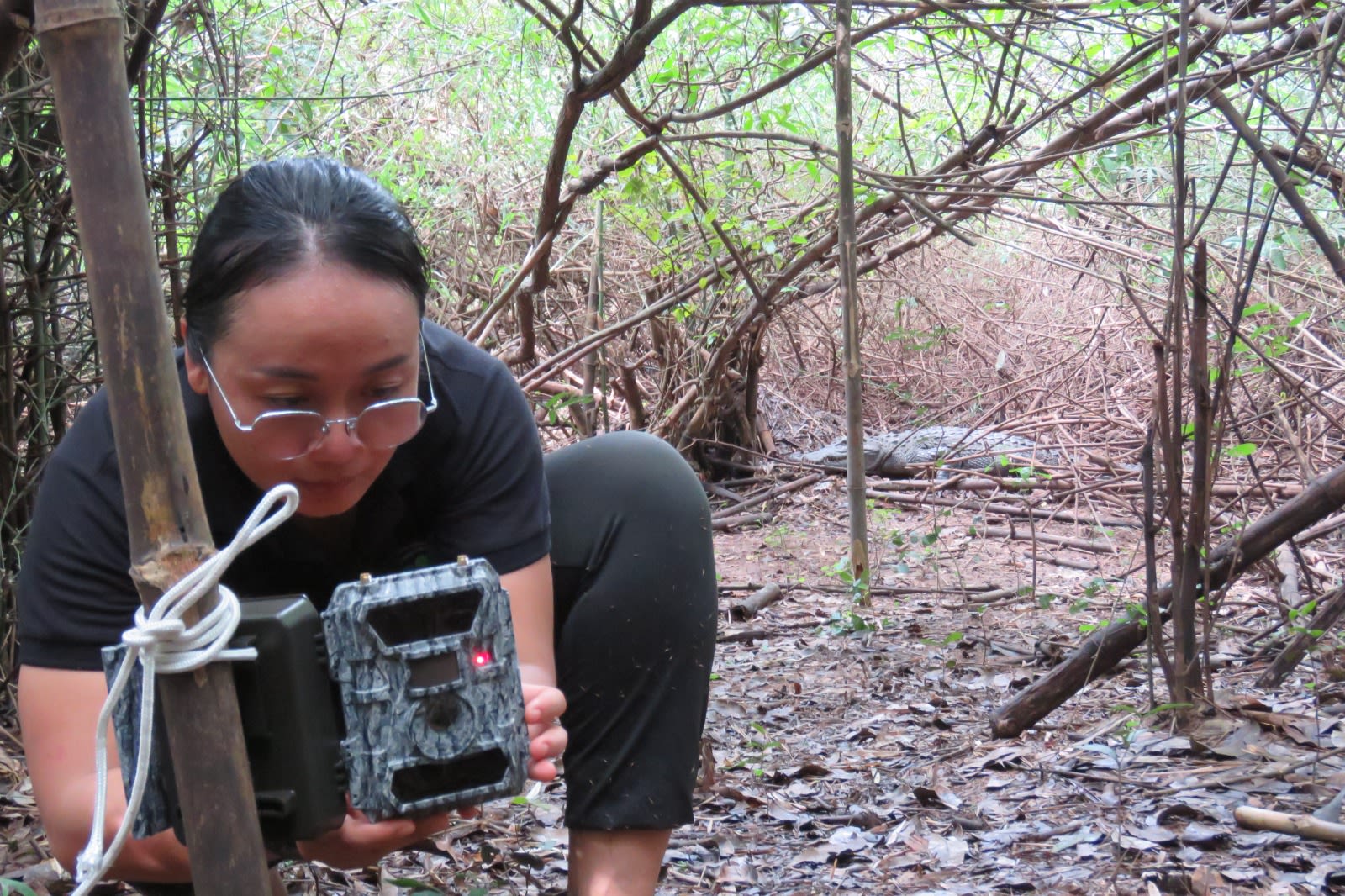
Akchousanh setting up a camera trap to monitor wildlife. © Courtesy of Akchousanh Rasphone
Akchousanh setting up a camera trap to monitor wildlife. © Courtesy of Akchousanh Rasphone
L: Hi Akchousanh, thank you for chatting with me. I first wanted to hear about your career, how did you get started?
A: Well I started my journey with a bachelor degree in Geographical Information System (GIS) at the University of Southern Queensland. I then did my Masters in Geographical Sciences at the National University of Australia and after this I undertook a post-graduate diploma for one year on International Wildlife Conservation Practice. Finally, I completed my PhD in Zoology at Oxford University in the UK and my thesis was on Intraguild Interaction of Carnivores and their Prey.
L: That’s an impressive list! What encouraged you to pursue a career in nature and wildlife conservation?
A: When I finished studying in Australia I came back to Laos and worked at The National University in the Environmental Unit and taught a GIS introduction course. I had an opportunity to join Wildlife Conservation Society (WCS) part time as a GIS specialist, and through that experience I was involved in multiple projects where I met a lot of biologists. It was this group of people that inspired me because being in the field with them was super interesting and this made me want to be more than a technician.
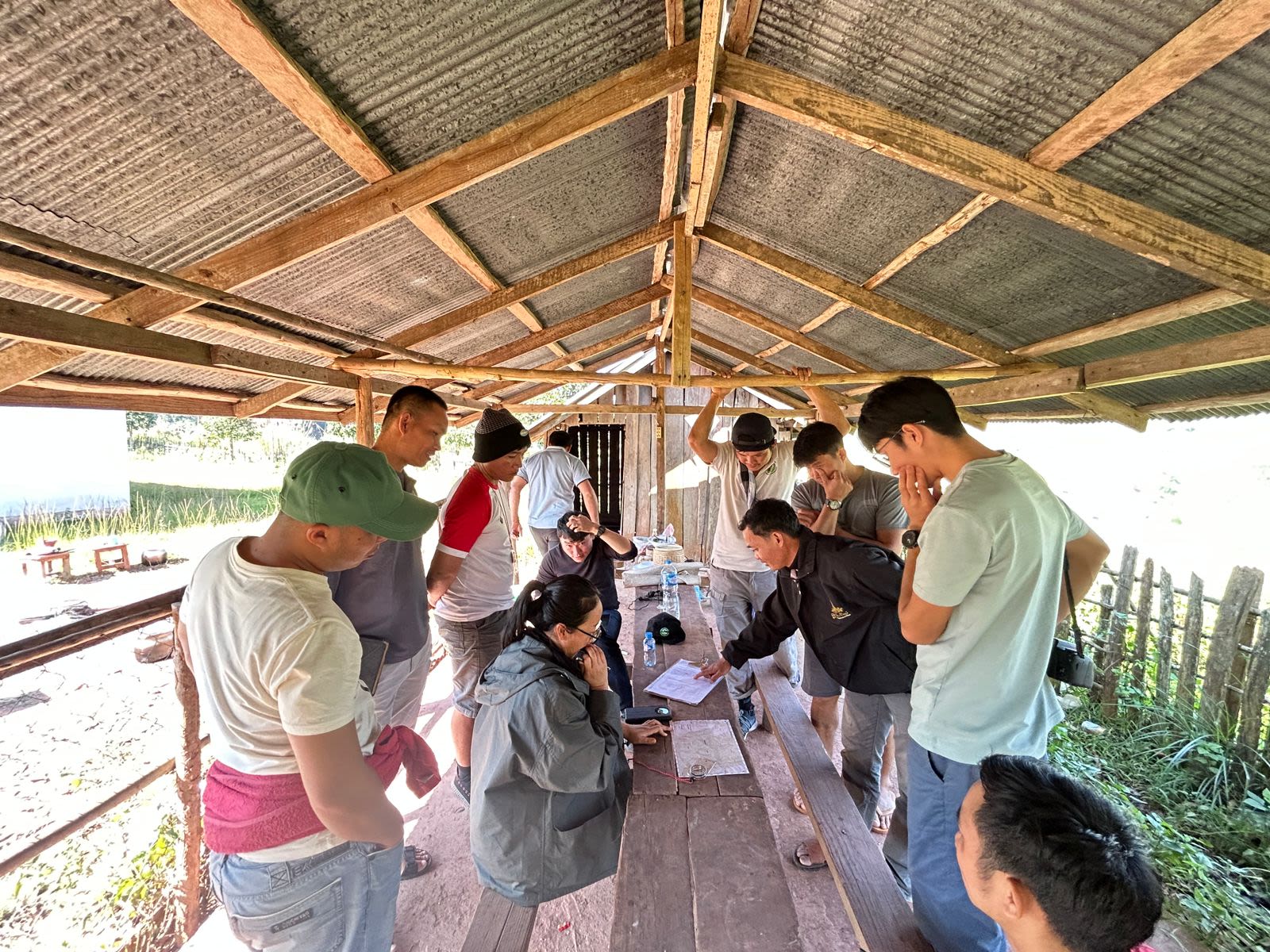
Akchousanh leads a field team monitoring wildlife in Laos. © Courtesy of Akchousanh Rasphone
Akchousanh leads a field team monitoring wildlife in Laos. © Courtesy of Akchousanh Rasphone
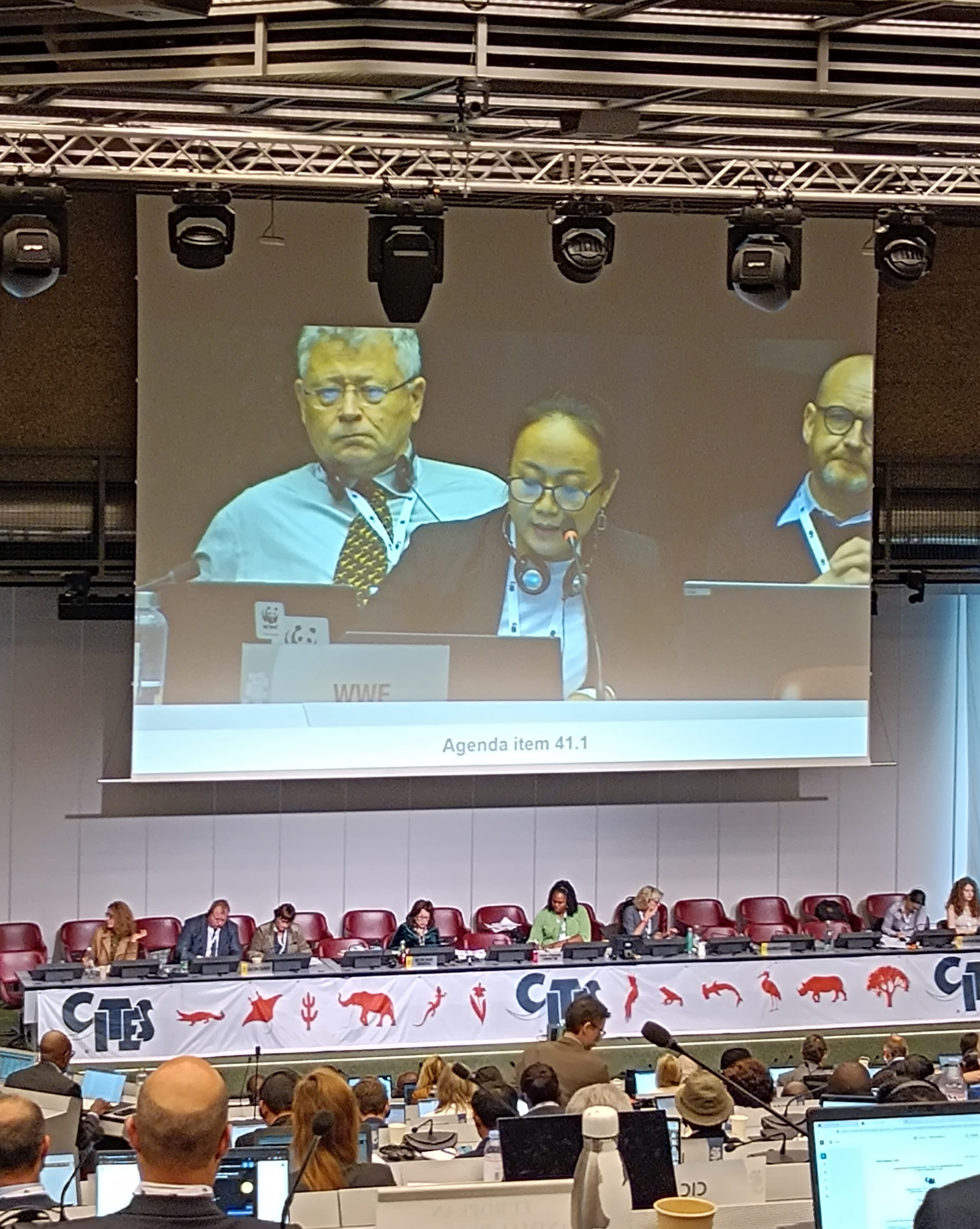
Akchousanh giving an intervention about Asian big cat trade on behalf of several organisations at an intergovernmental meeting of the Convention on International Trade in Endangered Species of Wild Fauna and Flora (CITES). © Audrey Chambaudet / WWF
Akchousanh giving an intervention about Asian big cat trade on behalf of several organisations at an intergovernmental meeting of the Convention on International Trade in Endangered Species of Wild Fauna and Flora (CITES). © Audrey Chambaudet / WWF
L: Wild tigers have gone extinct in Laos but the country remains a tiger range country because of its potential for tiger recovery. Can you explain a bit more about this?
A: Tigers were known to be widely distributed across Laos in the 1990s, but the population began to decrease. When I started working at WCS in 2005 I had a chance to work in the Nam Et-Phou Louey National Park which at the time was known as a Tiger Forever site and was part funded by Panthera. Led by Dr. Chanthavy Vongkhamheng at the time, our team undertook a large wildlife monitoring project with lots of camera traps. It was probably the first site where we conducted a tiger population estimate in the country as well as the only site in Laos at that time where we knew there was a breeding tiger population. The monitoring continued over the years and we started seeing less tigers, by 2012 only a few tigers were recorded. I did my PhD project at this site and I increased the number of camera trap locations and in 2013 I found only two individuals, the same male and female that were captured in 2012. From 2014 onwards we found nothing. The extirpation of wild tigers happened before my eyes at the site home to the only breeding tiger population in the country.
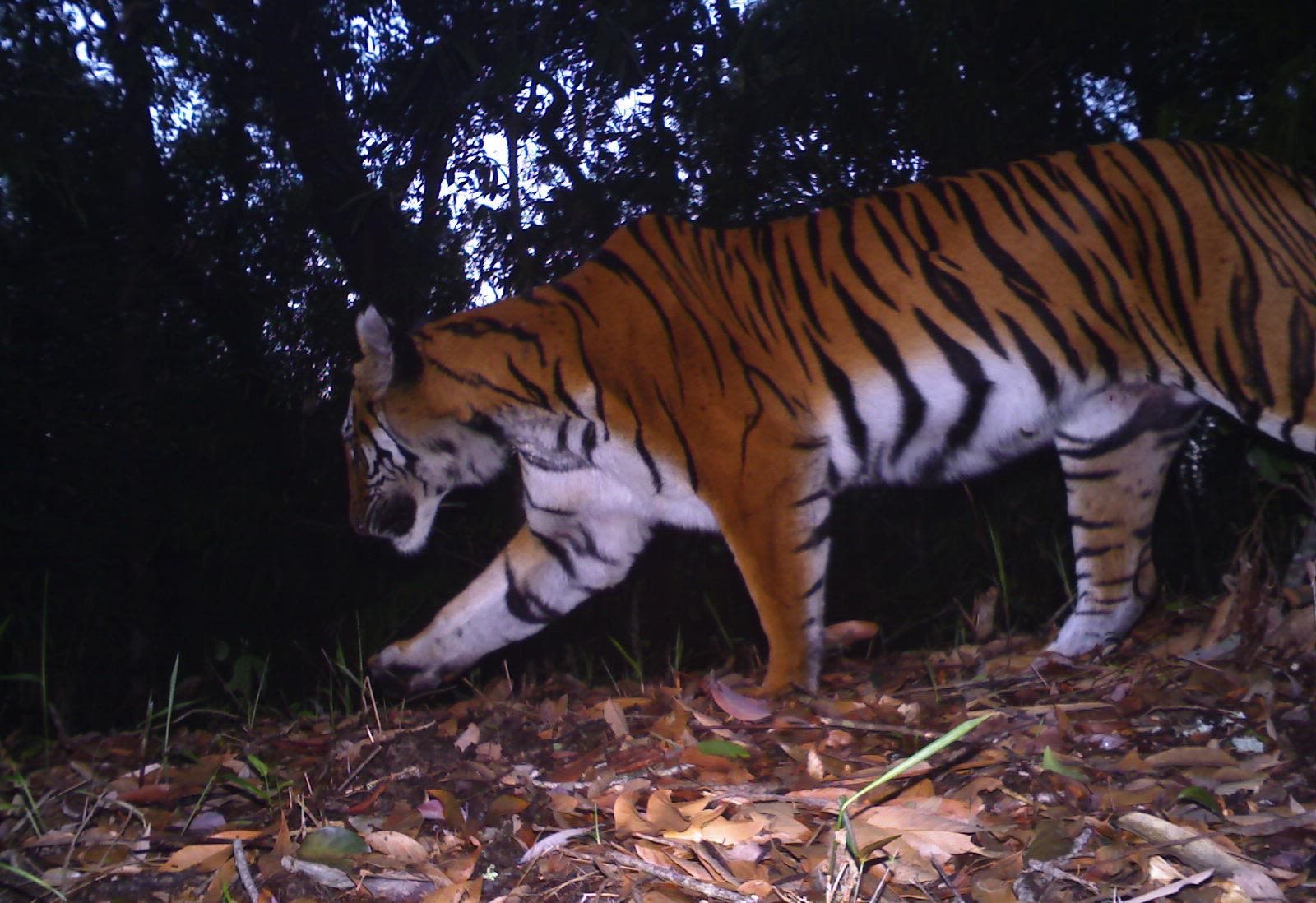
A camera trap photo of one of the last tigers in Laos. © Akchousanh Rasphone, WildCRU, and WCS-Laos
A camera trap photo of one of the last tigers in Laos. © Akchousanh Rasphone, WildCRU, and WCS-Laos
The main driver for tigers going extinct in Laos was hunting by poachers who used snares to trap wildlife. Snaring continues to pose a significant threat to Laos’ wildlife because unless removed, the snares remain in the forest for years and continue to catch anything that falls prey to the metal trap.

WWF estimates that there are over 12 million snares present in the protected areas of Cambodia, Lao PDR and Viet Nam - a group of countries that are at the centre of the regional snaring crisis and where tigers are nationally extinct. © Emmanuel Rondeau / WWF-US
WWF estimates that there are over 12 million snares present in the protected areas of Cambodia, Lao PDR and Viet Nam - a group of countries that are at the centre of the regional snaring crisis and where tigers are nationally extinct. © Emmanuel Rondeau / WWF-US
L: Do you think you’ll see tigers return to Laos in your lifetime?
A: I hope to see them return to the wild here. The only way I can see is by natural dispersal in Nam Poui Protected Area in the north of Laos because of the connecting piece of land with northern Thailand. But in Laos, this is quite far away from happening. Before we think about tigers returning we really need to focus on tiger prey recovery in the country because of the impact snares have had in our landscapes - we have good forests but we don’t have many species in them.
In Nam Poui we still have tiger prey such as gaur, sambar, muntjac, wild pig, and serow but these are in very low densities. We’re advocating to protect our important habitats and as a first step we need to ensure tiger prey populations are sufficient for tiger recovery and are stable. Once we’ve achieved this we can slowly expand into other areas.
L: What advice would you give to girls and women who are interested in a career in nature conservation?
A: If your heart's in it, just do it because it doesn’t matter when you start. I didn’t grow up thinking I was going to be a Conservation Director.
I happened to be around people who inspired me and so if you’re inspired about anything I say, or by anybody else in conservation, it’s never too late to start and you’ll find your way. As much as we know women can do what men do, I find some things challenging that are specific to women, such as having periods. I can feel tired or weaker during this time which can be hard when you’re working in the forest. When this happens I think that I can’t show I’m weak and I have to push through, but I’m getting better at sitting back and trying to just accept it. It’s fine I’m not the same as them, and by accepting your differences you find the solution to perform the job.
Often I ask myself whether being a woman is a challenge? Yes, the challenge is there but for me I try not to be the victim of the concept. While the dynamic is changing a bit, in Laos men still hold many senior positions. I experience being the only woman all the time. I regularly train third parties and other stakeholders, when I walk in the room I'm the only woman and of course you get that look but I never let that look stop me from doing my job. In my head I know what I’m there for, I know what I’m doing, and I’ll show you that I can do it.
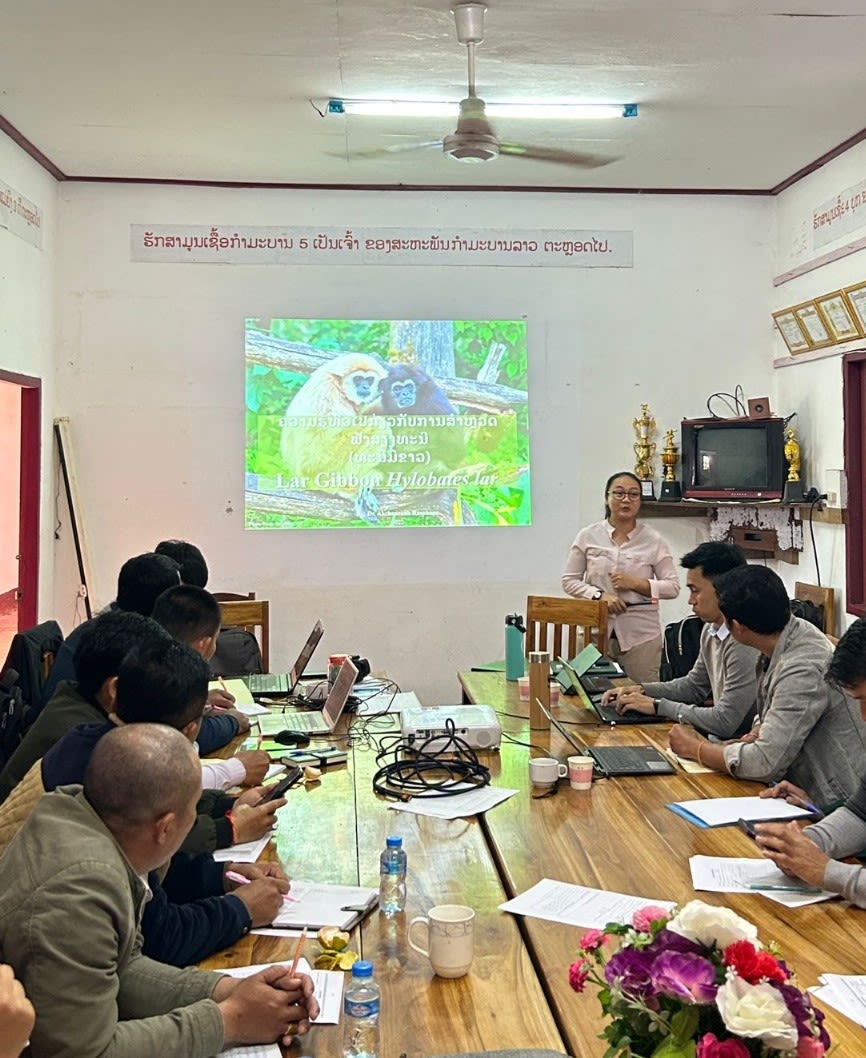
© Courtesy of Akchousanh Rasphone
© Courtesy of Akchousanh Rasphone
I always act with respect and sometimes with a bit of toughness. You have to find the balance between what you say and how to say it, know when to act tough, when to be soft. It’s not easy but learning how to read a situation and navigate this kind of work is very important. Particularly when you’re in the forest with 16 men, how you carry yourself is really important. Use your intuition!
L: Thank you so much for chatting with me today. It’s been really interesting to hear about your career and we can’t wait to see what you do in your new role.
A: Thank you, happy International Women & Girls in Science Day!
In WWF’s tiger landscapes there is an incredible mix of women and girls leading the way in tiger conservation. WWF’s Tigers Alive is committed to telling these stories authentically and ensuring female role models are visible in our communications, to inspire others and advocate for change.